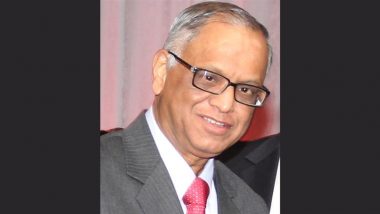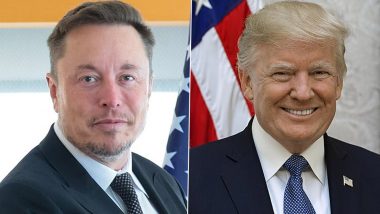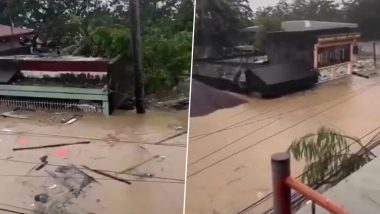New Delhi, March 1: 2017 was the hottest non-El Nino year in the history of earth! It was a year of natural disasters. The impact of climate change is becoming more visible than ever with wildfires, hurricanes, tropical storms, famines, and avalanches rocking different parts of the world. But the sad truth is that the American President, Donald Trump, who is supposedly the leader of the world, called it a hoax.
The USA pulled out of the Paris Agreement on climate change last year, claiming it to be a bad deal and disadvantageous to American workers. The fact of the matter is that the USA is the third highest per capita emitter of CO2 in the world. Bigger polluters must take their responsibilities and pay first!
While the entire debate about climate change has been hijacked by mitigation, it may already be too late to stop the climate change. Even without any anthropogenic intervention, global climate does change from time to time. Historical evidence shows that the first civilisation in India, the Indus Valley Civilisation, collapsed because of climate change! And humans have contributed nothing, but only sped up the entire process. Can our future be any different?
Although a lot of concerns have been raised about India's commitment to low-carbon economic growth, merely looking at a country's total carbon emissions doesn't tell the full story of its contribution to global warming. While India is the third biggest emitter of CO2, its per capita CO2 emissions in the world are lowest amongst the top 20 CO2 emitting countries. The West preaching us to not use coal is like an alcoholic preaching temperament. India has around 250 million people without access to electricity, observing 'Earth Hour' every hour, 365 days a year!
It is imperative we expand domestic fossil fuel production, without diminishing our commitment to fight against climate change. We are ranked 14th in Climate Change Performance Index (CCPI) 2018 out of 84 nations. According to Climate Action Tracker, India's current climate policies will realise its non-fossil capacity target, and even overachieve its emissions intensity target submitted under the Paris Agreement as early as 2022, which is eight years earlier than the intended target of 2030!
The aim is to achieve better efficiency in coal and make good use of our comparative advantage in renewables. Our swagger lies in the 'SEAL' tetralogy- Solar pumps, Electric vehicles, Agroforestry, and LEDs! The government is providing massive subsidies on solar-powered pumps, and thereby, addresses the issues of unreliable electric pumps, costly diesel, and overuse of subsidised power.
These pumps also have the potential to alleviate the underground water crisis in India, one great example being the power buyback model of Gujarat. International Water Management Institute (IWMI), with the help of Madhya Gujarat Vij Company Ltd (MGVCL) - a state discom - has demonstrated how farmers can harvest solar energy through solar pumps and generate additional income by selling excess power to state utilities.
This has incentivised the farmers to not over-irrigate their farms, and thus, helped in conserving the groundwater. Moreover, the government is working to facilitate an all-electric car (EVs) fleet by 2030, much before than developed nations, such as the UK and France (2040). The first tranche of EVs will be used by central government employees. In addition, India targets to achieve 33 percent (currently 24 percent) of tree cover through agroforestry, a land use management system in which trees or shrubs are grown around crops.
Agro-forestry helps in retaining moisture in the soil and puts a check on erosion by wind and water, and therefore, reduces crop damage. By growing trees alongside crops, Indian farmers are boosting their incomes, while also saving the environment. It's a win-win situation and may be an important factor in doubling farmers' income.
Our National LED conversion programme, UJALA, is the world's largest efficient lighting programme. As of January 18, 2018, over 28.5 crores LED bulbs have been distributed under UJALA, which have resulted in savings of over 37 million KWh energy, ?15 crores, and 3 crore tons of CO2per year. The failure rate of these LED bulbs is only 0.48%! Even UK and Malaysia have entered into a joint venture with India. In addition, we are already exporting LED bulbs to South Asian nations.
Being a developing nation which is far away from its potential urbanisation, we have the opportunity to climate-proof our new smart cities and retrofit existing ones. The need of the hour is to develop infrastructure in order to meet food demand with changing rain patterns, rehabilitate people in coastal areas, and manage environmental migration.
While mitigation is a continuous short-term measure to reduce the impact of the global climate change, adaptation is the long-term measure to relegate the risks posed by this change. Change is the only constant, and if we don't adapt to the inevitable, the fate of ours and many other species will be the same as those of Neanderthals. There will be no American to make America great again! The views expressed in the above article are that of Mahima, a student of M A Economics at the Delhi School of Economics.


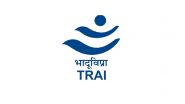


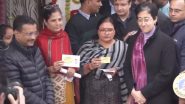







 Quickly
Quickly









